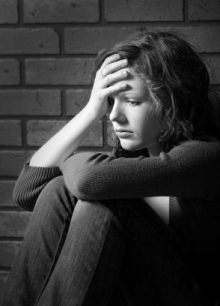ᔥSubstance Abuse and Mental Health Administration (SAMHSA)

A new report shows that the percentage of girls who experience a major depressive episode in the past year triples between the ages of 12 and 15 (from 5.1 percent to 15.2 percent respectively). The report by the Substance Abuse and Mental Health Services Administration (SAMHSA) also shows that an annual average of 1.4 million adolescent girls age 12 to 17 experienced a major depressive episode in the past year. In addition, the report reveals that adolescent girls aged 12 to 17 are three times more likely to have experienced a major depressive episode in the past year than their male counterparts (12 percent versus 4.5 percent).
A major depressive episode is defined using criteria set forth in the Diagnostic and Statistical Manual of Mental Disorders (DSM-IV) developed by the American Psychiatric Association. Under this definition, a major depressive episode is when a person experiences a period of depressed mood or loss of interest or pleasure for two weeks or longer and also experiences at least four other symptoms that reflect a change in functioning, such as problems with sleep, eating, energy, concentration and self-image.
“It is crucial that we provide adolescent girls the coping skills and social supports they need to avoid the onset of depression, and to offer behavioral health services that foster resilience and recovery if they experience it,” said SAMHSA Administrator Pamela S. Hyde. “These efforts are a sound investment in girls’ health and well-being and in our nation’s future.”
SAMHSA has a number of programs designed to effectively promote the recovery and success of adolescent girls who experience depression. One such program, the Child Mental Health Initiative, provides comprehensive, coordinated services and care across all of the systems and individuals, such as parents and other family members, teachers, friends, coaches, and other influential adults, that come into regular contact with young people. This approach has been shown to significantly reduce depression and helps youth lead full and productive lives.
One of the report’s other major findings was that older adolescent girls experiencing major depressive episodes were more likely to receive treatment than younger ones – about two-fifths of girls age 15 to 17 received treatment as opposed to only one third of the girls aged 12 to 14.
The report Data Spotlight: Depression Triples between the Ages of 12 and 15 among Adolescent Girls, is based on combined data from the 2008 to 2010 SAMHSA National Survey on Drug Use and Health (NSDUH). NSDUH is a scientifically conducted annual survey of approximately 67,500 people throughout the country, aged 12 and older.
The full report is available at: http://www.samhsa.gov/data/spotlight/Spot077GirlsDepression2012.pdf
